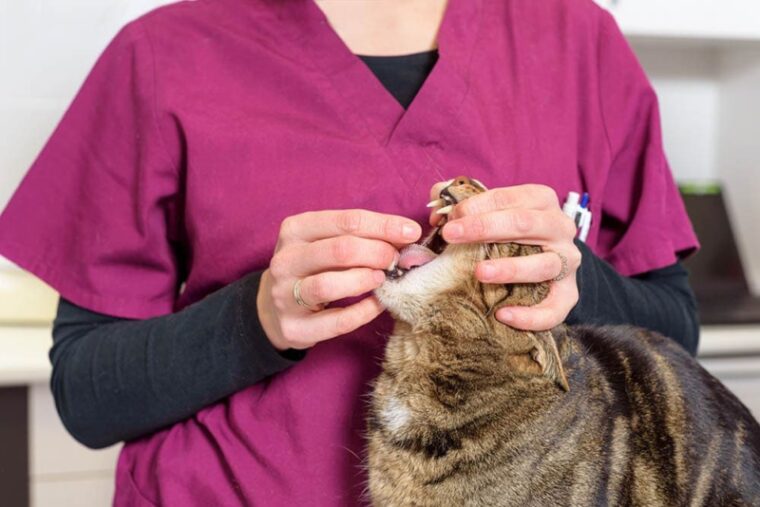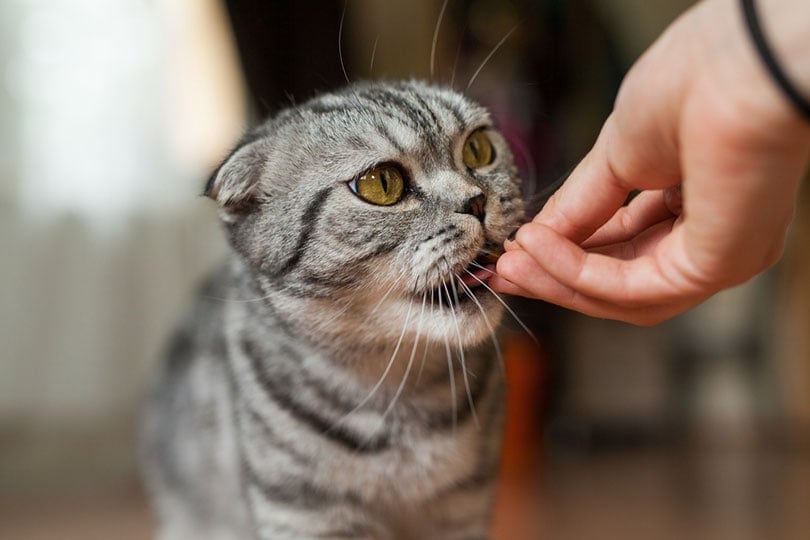
Benadryl is produced as an over-the-counter medication for allergies, itchiness, and hay fever in adults and children. You can take it by mouth or use it as a topical cream for itchy rashes or sore skin. It is widely available and regularly used, a common name to find in your medicine cupboard! But is it safe to use in our pets if they are similarly sneezy or itchy? Cats can benefit from the careful use of Benadryl with instructions from your vet. In this article, we will explain further.
What Is Benadryl?
Benadryl in the US contains the antihistamine drug diphenhydramine in varying doses depending on the formulation and whether it is for adults or children.

How Does Benadryl (and Other Antihistamine Drugs) Work?
Antihistamine drugs target the chemical messenger histamine in our bodies. Histamine is one of the main players when we have an inflammatory reaction to allergens, stings, and bites. When we get brushed by nettles, bitten by mosquitos, or have a hay fever reaction to pollens, for example, histamine is released by our cells and causes the classic symptoms like sneezing, watery eyes, runny nose, itchiness, rashes, and congested sinuses. By switching off histamine, diphenhydramine (like other antihistamine drugs) helps to reduce these symptoms and make you feel better!
Histamine is only one part of what is a very complex biological reaction to these inflammatory causes. This means that while antihistamines help to control symptoms, they cannot completely resolve the problem and are only suitable for relatively mild problems. Severe inflammatory and allergic reactions need stronger drugs often used in combination to help from different sides. In the worst allergic reactions, such as anaphylactic reactions, urgent medical help is needed, and antihistamines are not enough by themselves.
Do Cats Get Allergies and Reactions Like Humans Do?
Both dogs and cats have the same chemical messenger system involving histamine as we do. This means they can suffer the same inflammatory and allergic responses as we can. Dogs are more commonly affected than cats, especially because dogs are naturally more enthusiastic at sticking their noses into places they shouldn’t! It is not uncommon for veterinarians to see dogs with very swollen noses and faces after finding a wasp’s nest, for example!
Dogs are also more likely to dive into nettles than the more careful cats. The most common reaction cats have by far is to flea bites. The actual bite of the flea is itchy, but the cat then reacts to the flea’s saliva and has a more severe, longer-lasting reaction.

How Do I Know if My Cat Has Allergies?
Dogs and cats do suffer from allergies like we do, often reacting to pollens (hay fever) and other allergens in the environment—it can be anything and may be several different things! Again, dogs are more likely to suffer these than cats. Allergies tend to make dogs and cats very itchy as the main symptom. Animals will lick and bite their bodies obsessively, especially targeting the flanks and the feet. Dogs will often have sore ears, too.
Cats may over-groom themselves to be completely bald on their tummy or flanks. Usually, there aren’t nasty rashes or skin lesions, but these can develop with severe self-trauma. If fleas are associated with the problem, cats often develop crusty scabs along their back. Allergic reactions, such as swelling after a bite or sting, can be short-term, or longer-term, such as hay fever.
Can I Give Benadryl to My Cat?
Both cats and dogs benefit from the careful use of antihistamine drugs and it is possible to use these medications effectively in pets. However, as above, histamine is only one part of the story, and so antihistamines are naturally limited in what they can achieve.
Use Benadryl With Caution and Seek Professional Advice
There are no cat versions of Benadryl or diphenhydramine, so naturally, these products are off-license or off-label. They have not been extensively researched or tested for safety like other licensed products have. This is not a reason to avoid them; just use them with caution and ideally with professional advice from a veterinarian.
Typical doses are usually around 2–4mg per kilo of body weight, 3–4 times a day as a maximum. This equates to half of a typical 25mg Benadryl tablet for a 3–6kg (6–12lb) adult cat, given every 6 to 8 hours. If your cat is mildly sneezy or itchy and the problem is short-term, it is not unreasonable to use Benadryl.

Consider the Underlying Cause of the Allergy
It is important to remember that Benadryl only manages symptoms, not the underlying cause. It is also usually only appropriate for mild, transient problems – if your cat is severely affected or the problems are not going away, it is vital to seek advice from a veterinarian at an early stage. For example, if your cat has fleas and an associated flea allergy, flea treatment will be a much more useful solution to the problem than antihistamines!
Equally, a severe allergy may need stronger drugs than antihistamines, especially if your cat is struggling to breathe, and a veterinarian should provide these.
Consult a Veterinarian if Unsure
In general, Benadryl is a useful treatment if your cat has a sudden histamine-based reaction (such as after a sting) and can be beneficial for mild long-term allergies. Sometimes, it is used alongside other drugs for the control of long-term, more problematic allergies. If you aren’t sure, then consult a veterinarian first.
What Side Effects Might Benadryl Cause in Cats?
Most antihistamine drugs can cause drowsiness in cats, just like in people. Your cat might become sleepy and less active or attentive – this is the most common side effect. Occasionally, it can have the opposite effect and make some cats a bit hyper and excited. Benadryl should not be given to cats with overactive thyroid conditions or glaucoma and should not be given alongside other drugs unless recommended by a veterinarian.
Conclusion
Benadryl contains an antihistamine drug called diphenhydramine that is used in humans to relieve the symptoms of itchiness and allergies. It can be given to most cats at a carefully controlled dose (off-label) to help with similar problems but may cause drowsiness. If your cat’s problems are more severe or they are not rapidly improving within a day or so, you should seek professional help from your local veterinarian.
See Also:
- 8 Best CBD Oils for Cats – Reviews & Top Picks
- Are Cat Allergies Genetic? What You Need To Know!
- How Do Cat DNA Tests Work? Everything You Need to Know!
Featured Image Credit: David Herraez Calzada, Shutterstock







